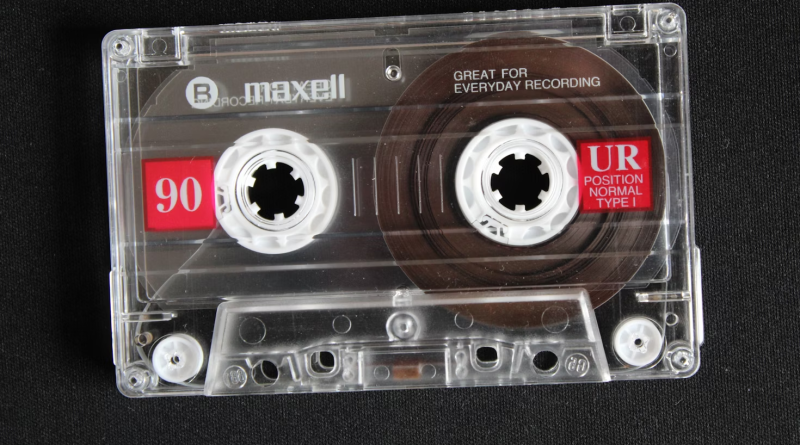From Vinyl to Streaming – The Evolution of How We Listen to Music
How we listen to music has dramatically transformed over the past century. From the warm crackle of vinyl records to the instant accessibility of streaming services, each technological advancement has revolutionised our relationship with music. This article traces the history of music consumption formats, highlighting the key developments that have shaped the industry and our listening habits.
The Digital Age and Its Impact on Other Industries
The digital age has revolutionised the music industry and forced the evolution of multiple other industries. For instance, the casino industry has shifted from traditional land-based casinos to online platforms. Online casinos like £5 minimum deposit casinos offer a convenient and accessible way to enjoy gambling, attracting a broader audience. The digital transformation has led to developing sophisticated gaming software, virtual reality experiences, and mobile-friendly platforms, making online gambling more immersive and engaging. This shift mirrors the music industry’s move towards digital, highlighting the broader trend of technology-driven change across various sectors.
The Early Days: Phonographs and Gramophones
The journey begins in the late 19th century with Thomas Edison’s invention of the phonograph in 1877. This device used cylindrical records to play back recorded sound. Edison’s phonograph was soon followed by Emile Berliner’s gramophone, which played flat discs and became the standard for music playback.
Gramophones and their shellac discs were the primary medium for listening to music at home from the early 1900s through the 1940s. These records typically played at 78 revolutions per minute (RPM) and could hold only a few minutes of audio per side, leading to frequent record changes during listening sessions.
The Rise of Vinyl Records
The 1940s and 1950s saw a significant shift with the introduction of vinyl records, which were more durable and provided better sound quality than their shellac predecessors. Vinyl records came in two main formats: the 10-inch and the 12-inch long-playing (LP) records, which played at 33 1/3 RPM, and the 7-inch single, which played at 45 RPM.
LP records could hold much more music, allowing for the development of the album format. This enabled artists to create more cohesive and extended works. Iconic albums from artists like The Beatles, Bob Dylan, and The Rolling Stones were released on vinyl, solidifying the format’s place in music history. The large cover art also became an essential part of the music experience, providing a canvas for creative and memorable artwork.
The Compact Cassette: Portability Revolution
In the 1960s, the Philips Company introduced the compact cassette, which offered a new level of portability. Cassettes were compact, durable, and easily portable, unlike vinyl records, making them perfect for cars and personal stereos. The introduction of the Sony Walkman in 1979 further revolutionised music consumption by allowing people to listen to their favourite tunes on the go.
Cassettes also had the advantage of being recordable, giving birth to the mixtape culture. Fans could create personalised playlists, sharing their favourite songs with friends and loved ones. This personal touch added a new dimension to music consumption, fostering a more intimate connection with the medium.
The Digital Age: Compact Discs (CDs)
The introduction of the compact disc (CD) in the 1980s marked the beginning of the digital age. Developed jointly by Philips and Sony, CDs offered superior sound quality and durability compared to vinyl records and cassettes. They were also easier to store and transport.
CDs quickly became the dominant format for music consumption, driving significant changes in the music industry. The advent of digital recording and playback allowed for greater precision and clarity in music production. Albums like Michael Jackson’s “Thriller” and Nirvana’s “Nevermind” exemplified the potential of the CD format, selling millions of copies worldwide.
The digital format also paved the way for new technologies, such as the CD-ROM, which included multimedia content like videos, lyrics, and interactive features. This added another layer to the music experience, further engaging fans.
The Internet Era: MP3s and Digital Downloads
The late 1990s and early 2000s saw the rise of the internet and the MP3 format, revolutionising how music was consumed and distributed. MP3s compressed audio files to a fraction of their original size without significantly losing quality, making it easy to share and store large music libraries.
The launch of Napster in 1999 marked the beginning of the file-sharing era, allowing users to share MP3 files for free. While this democratised access to music, it also posed significant challenges for the music industry, leading to widespread piracy and a decline in physical album sales.
In response, the industry began to embrace digital downloads as a legitimate format. Apple’s iTunes Store, launched in 2003, provided a legal platform for purchasing and downloading music. iTunes allowed users to buy individual songs or entire albums, providing flexibility and convenience. The shift to digital downloads also meant that music could be instantly accessible, eliminating the need for physical storage.
The Streaming Revolution
The most recent and transformative change in music consumption has been the rise of streaming services. Platforms like Spotify, launched in 2008, and Apple Music, launched in 2015, have fundamentally altered how we access and listen to music. Streaming services offer vast libraries of music that can be accessed instantly from any device with an internet connection.
Streaming has made music more accessible, allowing users to quickly discover new artists and genres. The ability to create and share playlists and use algorithms to recommend music based on listening habits has personalised the music experience in unprecedented ways.
However, the streaming model has also sparked debates about fair compensation for artists. While streaming provides exposure to a global audience, artists’ revenue per stream is significantly lower than traditional album sales. This has led to ongoing discussions about how to ensure that musicians are fairly compensated in the streaming era.
The Future of Music Consumption
As technology continues to evolve, so will how we listen to music. Emerging technologies like virtual reality (VR) and augmented reality (AR) promise to create immersive music experiences, while advancements in artificial intelligence (AI) could lead to new forms of music creation and personalisation.
Blockchain technology also holds potential for the music industry. It offers new ways to manage digital rights and ensure fair compensation for artists. Platforms like Audius are already exploring decentralised models for music distribution and royalty payments.
The resurgence of vinyl records in recent years, driven by a desire for tangible music experiences and nostalgia, suggests that physical formats will continue to have a place in the music landscape. Collectors and audiophiles appreciate vinyl’s unique qualities, from its sound characteristics to its artistic packaging.
The evolution of music consumption formats, from vinyl to streaming, reflects broader technological and cultural shifts. Each new format has brought new ways to experience and engage with music, shaping our listening habits and the music industry. As we look to the future, it is clear that the way we consume music will continue to evolve, driven by technological innovation and our enduring love for music. The journey from vinyl to streaming has been one of constant change and adaptation, and it will be exciting to see where the next chapter in music consumption takes us.
FAQ: The Evolution of Music Consumption Formats
What was the first music format used for listening at home?
The first music format used for listening at home was the phonograph, invented by Thomas Edison in 1877. This device used cylindrical records to play back recorded sound.
What made vinyl records different from earlier formats?
Vinyl records, introduced in the 1940s and 1950s, were more durable and provided better sound quality than shellac discs. They also allowed for the development of the album format, with 12-inch LP records capable of holding much more music.
How did compact cassettes change the way people listened to music?
Introduced in the 1960s, compact cassettes offered a new level of portability. Unlike vinyl records, cassettes were compact, durable, and easily portable, making them perfect for cars and personal stereos. The Sony Walkman further revolutionised music consumption by allowing people to listen to their favourite tunes on the go.
What were the main advantages of CDs over previous formats?
Introduced in the 1980s, CDs offered superior sound quality and durability compared to vinyl records and cassettes. They were also easier to store and transport, and the digital format allowed for greater precision and clarity in music production.
How did MP3s and digital downloads impact the music industry?
MP3s and digital downloads revolutionised the music industry by making sharing and storing large music libraries easy. Platforms like Napster popularised file-sharing, while legal services like iTunes provided a platform for purchasing and downloading music, making it instantly accessible.
What are the benefits of streaming services for music listeners?
Streaming services like Spotify and Apple Music offer vast libraries of music that can be accessed instantly from any device with an internet connection. They allow users to discover new artists and genres quickly, create and share playlists, and personalise their music experience through algorithms that recommend music based on listening habits.
What challenges do streaming services pose for artists?
While streaming services provide exposure to a global audience, artists’ revenue per stream is significantly lower than traditional album sales. This has led to ongoing discussions about fair compensation for musicians in the streaming era.
Are physical music formats like vinyl still relevant today?
Yes, physical music formats like vinyl have seen a resurgence in recent years. Collectors and audiophiles appreciate vinyl’s unique qualities, from its sound characteristics to its artistic packaging. Vinyl records offer a tangible music experience that digital formats cannot replicate.
What potential future technologies could change music consumption?
Emerging technologies like virtual reality (VR) and augmented reality (AR) promise to create immersive music experiences. Artificial intelligence (AI) advancements could lead to new forms of music creation and personalisation. Blockchain technology also holds the potential for managing digital rights and ensuring fair compensation for artists.

